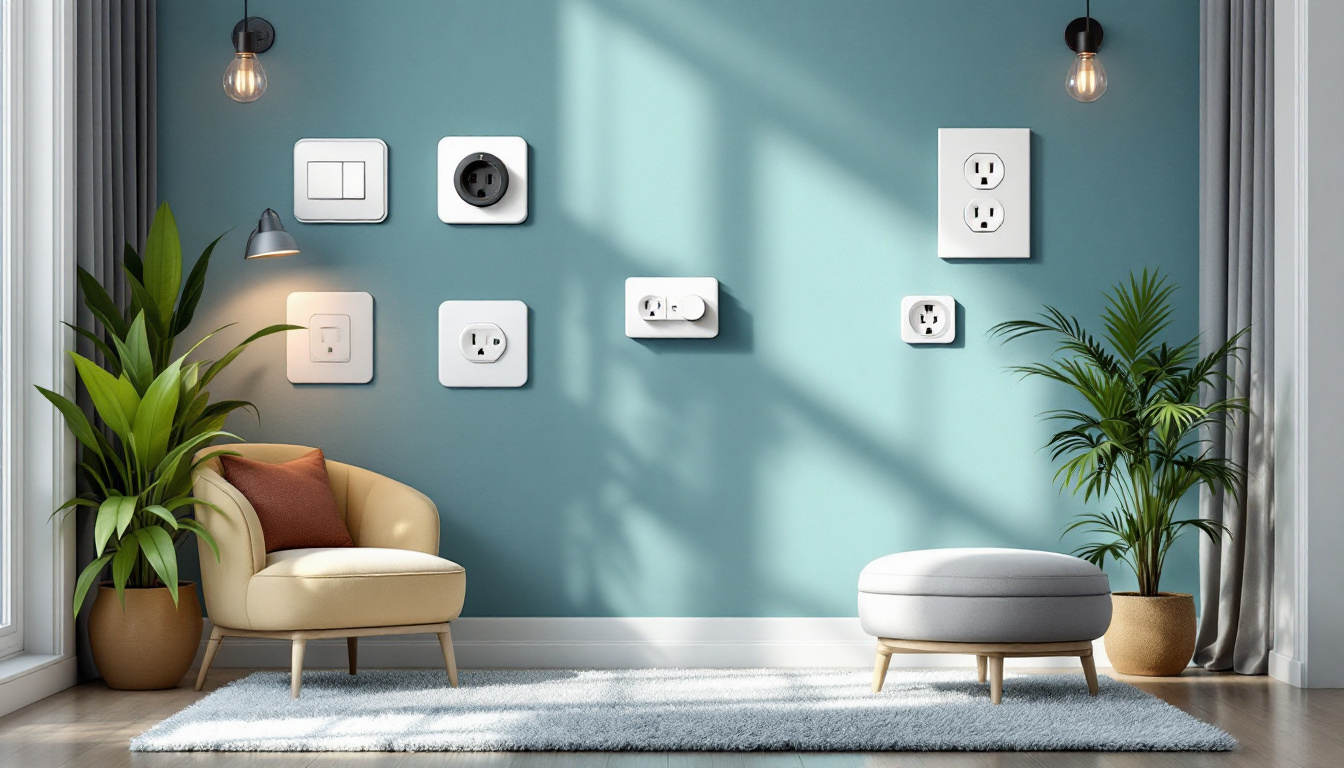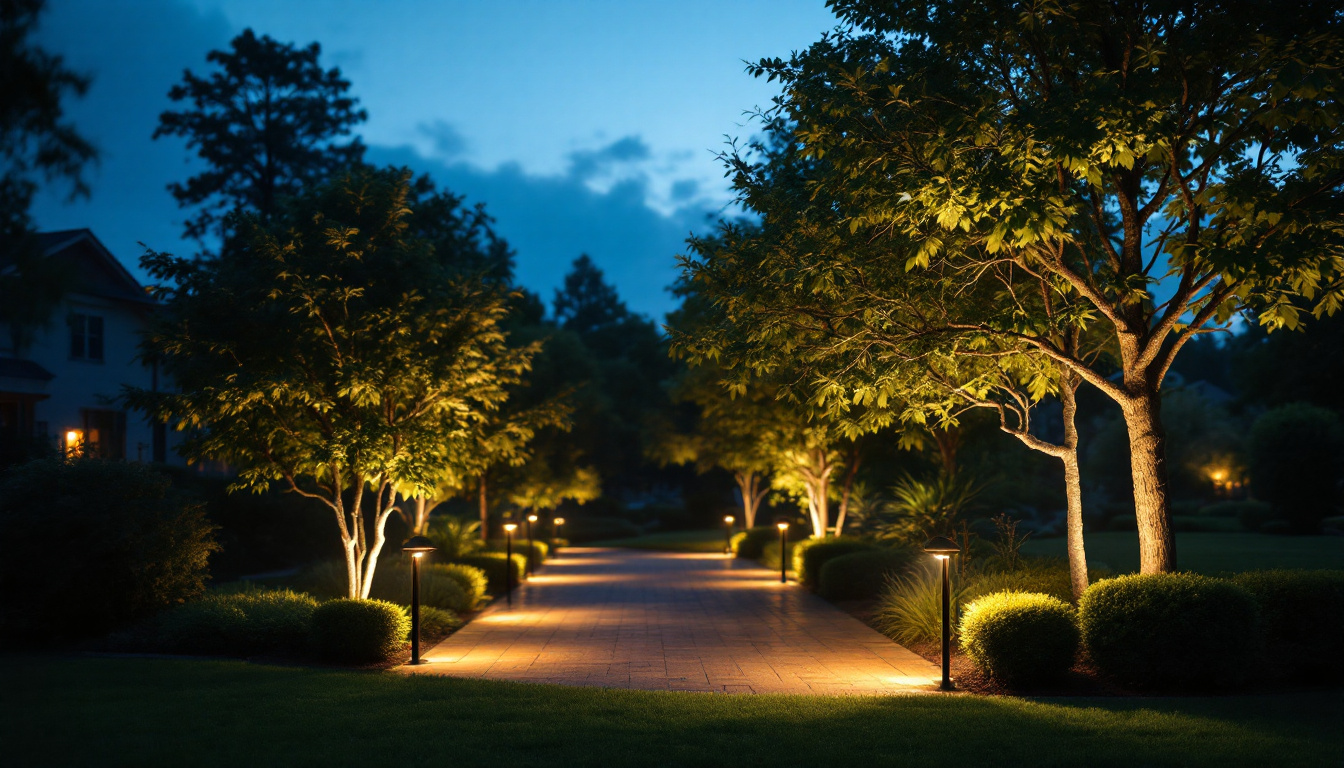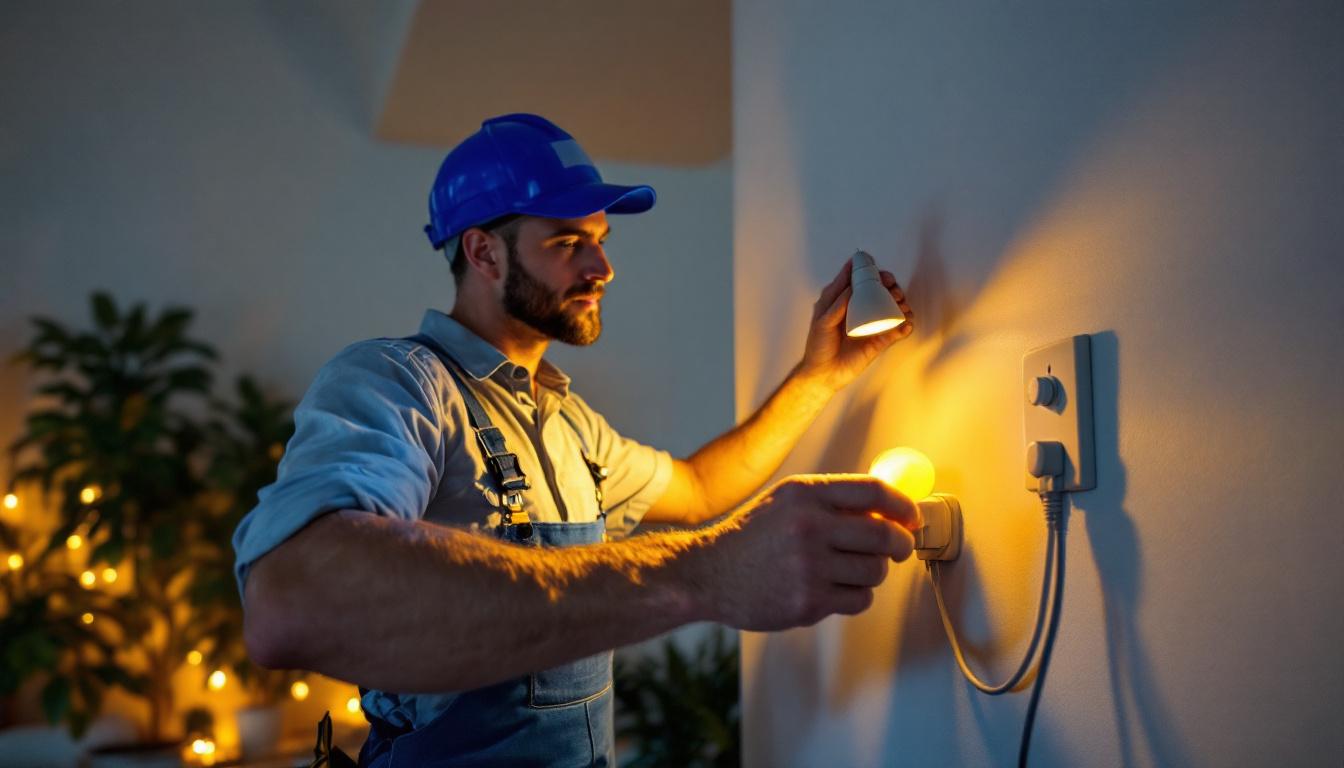
In the world of lighting design, wall outlets play a crucial role in determining the functionality and aesthetics of a space. Understanding the various types of wall outlets available can significantly enhance the effectiveness of lighting installations. This article delves into different wall outlet types, their applications, and how they can contribute to better lighting designs.
Wall outlets, commonly referred to as electrical receptacles, are essential components in any electrical system. They provide a point of connection for electrical devices, allowing them to draw power from the electrical grid. The type of wall outlet installed can influence not only the performance of lighting fixtures but also the overall design and ambiance of a room.
When considering wall outlets for lighting designs, it is important to take into account factors such as the type of lighting being used, the layout of the space, and the specific needs of the occupants. Each outlet type has its unique features and benefits, making it essential for lighting contractors to be well-informed.
For instance, standard 120-volt outlets are commonly used in residential settings and are typically compatible with most household appliances and lighting fixtures. However, for more specialized lighting solutions, such as those incorporating LED technology or smart home systems, GFCI (Ground Fault Circuit Interrupter) outlets may be necessary to ensure safety in areas prone to moisture, like kitchens and bathrooms. These outlets not only protect against electrical shock but also enhance the functionality of modern lighting designs by accommodating advanced features like dimming and color-changing capabilities.
Moreover, the placement of wall outlets plays a crucial role in maximizing the effectiveness of lighting. Strategically positioned outlets can eliminate unsightly extension cords and promote a cleaner aesthetic. For example, installing outlets at varying heights can facilitate the use of floor lamps or wall sconces, allowing for a more versatile lighting scheme. Additionally, incorporating USB outlets can provide convenient charging options for devices, further enhancing the usability of a space while keeping it stylish and modern. As technology continues to evolve, the integration of smart outlets, which can be controlled remotely via smartphone apps, is becoming increasingly popular, offering homeowners unprecedented control over their lighting environments.
The standard duplex outlet is perhaps the most common type found in residential and commercial spaces. Typically featuring two receptacles, it allows for the connection of multiple devices simultaneously. This type of outlet is versatile and can accommodate a wide range of lighting fixtures, including lamps and LED lights.
When designing lighting layouts, standard duplex outlets can be strategically placed to maximize convenience and accessibility. For instance, positioning outlets near seating areas can facilitate the use of table lamps, enhancing the overall lighting scheme while providing functional illumination.
Ground Fault Circuit Interrupter (GFCI) outlets are designed to protect against electrical shock by monitoring the flow of electricity and shutting off the circuit if an imbalance is detected. These outlets are particularly important in areas where water is present, such as kitchens and bathrooms. In terms of lighting design, GFCI outlets can be integrated into spaces that require ambient lighting while ensuring safety.
For example, in a bathroom setting, GFCI outlets can be used to power wall sconces or vanity lights, providing both functionality and safety. Lighting contractors should ensure that GFCI outlets are installed in compliance with local electrical codes to maintain safety standards.
With the rise of smart home technology, smart outlets have become increasingly popular. These outlets allow users to control lighting and other devices remotely via smartphone apps or voice commands. This technology not only enhances convenience but also contributes to energy efficiency by enabling users to schedule lighting according to their needs.
Incorporating smart outlets into lighting designs can offer significant advantages. For instance, they can be programmed to dim lights during specific times of the day, creating a cozy atmosphere in the evening while providing bright illumination during the day. Lighting contractors should consider the integration of smart outlets as a way to elevate the functionality of their designs.
As technology continues to evolve, the demand for USB outlets has surged. These outlets provide a convenient way to charge devices without the need for bulky adapters. In lighting design, USB outlets can be integrated into bedside lamps or wall-mounted fixtures, offering a seamless solution for charging devices while maintaining an uncluttered aesthetic.
For example, a bedside lamp equipped with a USB outlet can serve dual purposes, providing both illumination and charging capabilities. This thoughtful integration can enhance user experience and make a space more functional, particularly in bedrooms and living areas.
Recessed outlets are designed to be installed flush with the wall, providing a sleek and unobtrusive look. These outlets are particularly useful in modern lighting designs where aesthetics are paramount. They can be used to power wall-mounted fixtures or integrated into furniture, ensuring that cables are hidden and the overall design remains clean.
Incorporating recessed outlets into lighting designs can help maintain a minimalist aesthetic while ensuring that power is readily available. This is especially important in contemporary spaces where design and functionality must coexist harmoniously.
Multi-outlet power strips offer an effective solution for spaces that require multiple devices to be powered simultaneously. These strips can be mounted on walls or placed on desks, providing flexibility in lighting design. They are particularly useful in areas where several lighting fixtures or electronic devices are clustered together.
Lighting contractors can utilize multi-outlet power strips to create versatile lighting setups, allowing for easy adjustments and changes as needed. This adaptability can be beneficial in commercial spaces where lighting needs may vary throughout the day.
When designing lighting layouts, the height and accessibility of wall outlets are critical factors. Outlets should be positioned at a height that is convenient for users, allowing for easy access to plugs without straining. In general, standard outlet height is around 12 to 18 inches from the floor, but this can vary based on the specific application.
In spaces where lighting fixtures are frequently adjusted, such as in home theaters or conference rooms, placing outlets at a higher level can facilitate easy access. Consideration of user needs and the intended use of the space can guide optimal outlet placement.
The spacing of wall outlets should be carefully planned to ensure that they are readily available where needed. In areas with multiple lighting fixtures, such as living rooms or open-concept spaces, outlets should be distributed evenly to avoid long extension cords or power strips that can create clutter and safety hazards.
Lighting contractors should also consider the layout of furniture and other elements in the space when determining outlet placement. Ensuring that outlets are located near key lighting fixtures can enhance the overall design and functionality of the space.
Adhering to local electrical codes is paramount when installing wall outlets. These codes dictate the types of outlets that can be used in specific areas, as well as the required safety measures. Understanding and complying with these regulations not only ensures safety but also protects the integrity of the lighting design.
Lighting contractors should stay informed about changes in electrical codes and regulations to ensure that their installations are compliant. This knowledge can also enhance their reputation as professionals who prioritize safety and quality in their work.
Wall outlets can significantly influence the ambiance of a space. By strategically placing outlets to accommodate different types of lighting fixtures, contractors can create layered lighting designs that enhance the overall atmosphere. For example, using dimmable outlets with compatible fixtures can allow for adjustable lighting levels, catering to various moods and activities.
Incorporating outlets for accent lighting, such as wall sconces or LED strips, can also add depth and character to a room. These design elements can highlight architectural features or artwork, further enhancing the visual appeal of the space.
The integration of various wall outlet types can provide flexibility in lighting designs. For instance, using smart outlets allows for easy adjustments and control over lighting levels, while USB outlets offer convenient charging solutions. This adaptability can be particularly beneficial in spaces that serve multiple functions, such as home offices or living rooms.
By considering the unique needs of each space and the preferences of the occupants, lighting contractors can create designs that are not only functional but also responsive to changing needs and lifestyles.
Energy efficiency is a significant consideration in modern lighting design. Utilizing smart outlets and energy-efficient fixtures can help reduce energy consumption while maintaining optimal lighting levels. By incorporating outlets that allow for easy control of lighting, contractors can contribute to sustainable design practices.
Additionally, educating clients about the benefits of energy-efficient lighting solutions and smart outlets can promote awareness and encourage responsible energy use. This not only enhances the quality of the lighting design but also aligns with broader sustainability goals.
Understanding the different types of wall outlets and their applications is essential for lighting contractors seeking to create effective and aesthetically pleasing lighting designs. From standard duplex outlets to specialized options like USB and smart outlets, each type offers unique benefits that can enhance the functionality and ambiance of a space.
By considering factors such as outlet placement, compliance with electrical codes, and the specific needs of the occupants, contractors can design lighting solutions that are both practical and visually appealing. Ultimately, the thoughtful integration of wall outlets can be the secret to achieving better lighting designs that elevate the user experience and enhance the overall atmosphere of any space.
Ready to take your lighting designs to the next level? At LumenWholesale, we provide lighting contractors with the highest quality, spec-grade lighting products at exceptional wholesale prices. Say goodbye to local distributor markups and hello to our premium selection that meets rigorous industry standards. With free shipping on bulk orders, you can equip your projects with the best lighting solutions without any hidden costs. Elevate your lighting designs and enhance your client’s experience with the unbeatable value and convenience of Wholesale Lighting at the Best Value from LumenWholesale.

Discover innovative and cost-effective strategies for lighting contractors to enhance landscape projects.

Discover effective strategies for lighting contractors to tackle common challenges when working with 40 Watt Type B bulbs.
Discover the must-have tools and equipment that every lighting contractor needs to excel in their craft.

Discover essential insights and expert tips for lighting contractors on installing plug-in can lights.